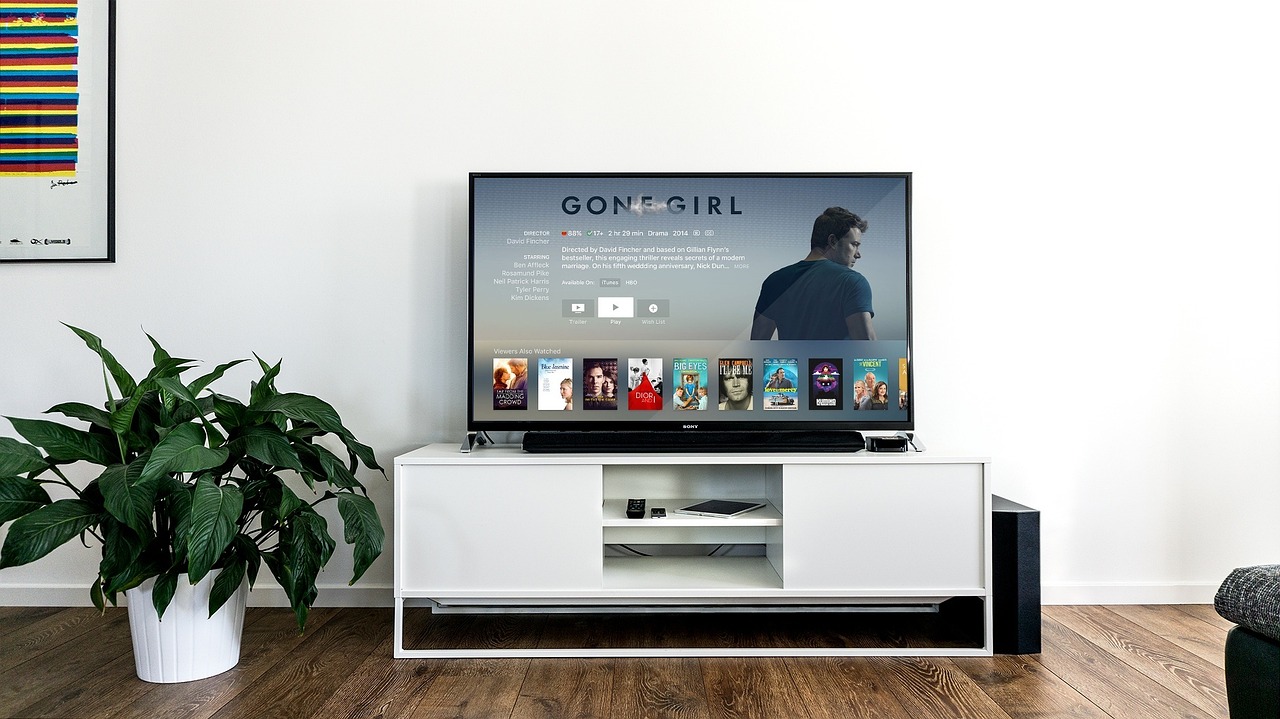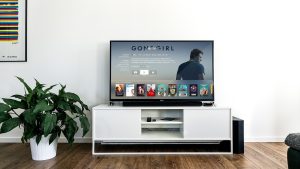Are you ready to step into the future of television technology? As we approach 2023, the world of TVs is evolving at a rapid pace, with new advancements and features that will revolutionize your viewing experience. From stunning visuals to immersive sound, the options available can leave you feeling both excited and overwhelmed. But fear not, because in this TV buying guide, we will unravel the mysteries and guide you through the maze of choices. So get ready to unlock the secrets of the latest TV trends and discover what you need to know in 2023.
Key Takeaways
- 4K TVs are the best option for most people due to their affordability and increasing availability of content.
- When determining TV size, consider the TV’s resolution, viewing distance, and THX recommendations.
- Different panel types, such as LED, OLED, QLED, and Mini-LED, offer varying image quality and brightness levels.
- Consider HDR standards like HDR10, HDR10+, and Dolby Vision for better image quality, and HDMI ARC or eARC ports for soundbar or surround sound system connectivity.
TV Resolution Options
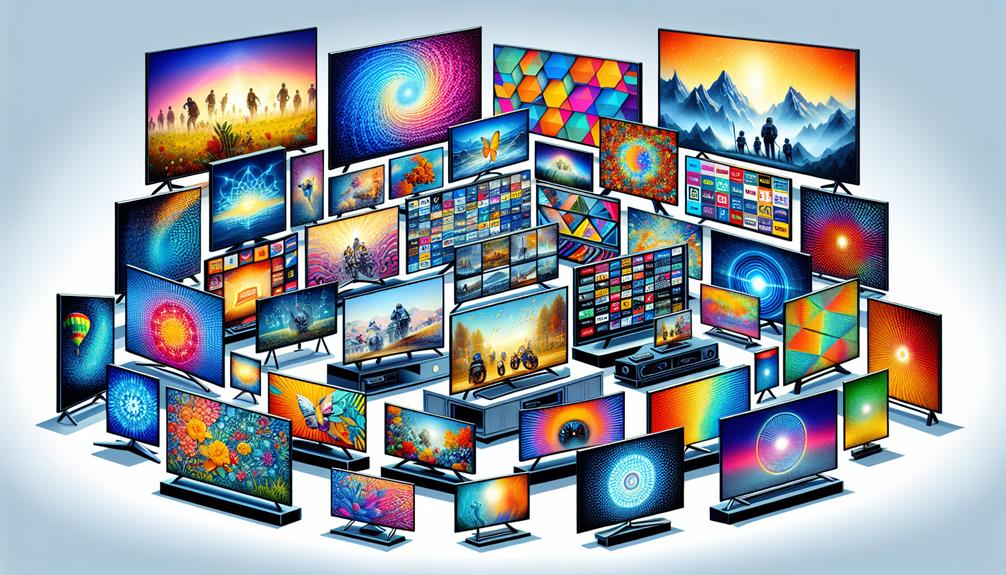
When it comes to TV resolution options, it’s important to understand the number of pixels each option offers and how it affects the overall image quality. HD (720p) has just under 1 million pixels, while Full HD (1080p) has over 2 million pixels. 4K (UHD) has 8 million pixels, and 8K has over 33 million pixels. The pros of higher resolution include sharper and more detailed images, while the cons include higher cost and limited content availability for 8K. For gaming, higher refresh rates result in smoother motion. A recommended refresh rate for TVs is 120Hz. The benefits of higher refresh rates for gaming include reduced motion blur and improved responsiveness. However, it’s important to note that not all games and consoles support higher refresh rates. Consider your gaming needs and budget when choosing a TV resolution.
Determining TV Size
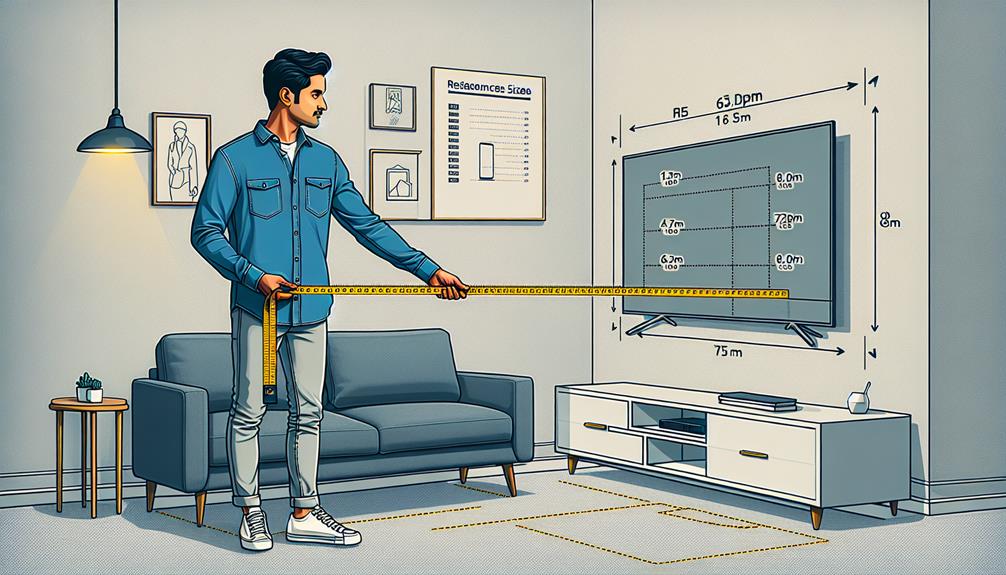
Now let’s move on to determining the size of your TV for the best viewing experience. When choosing a TV size for small rooms, it’s important to consider the viewing distance. For a comfortable and immersive experience, THX advises a TV that fills at least 20-30 degrees of your field of vision. If you want a more cinematic feel, go for a TV that takes up to 40 degrees of your field of vision. On the other hand, if you’re looking for a TV size for outdoor use, you may want to opt for a larger screen to compensate for the distance between the TV and the viewers. Keep in mind that bigger TVs generally provide a better viewing experience, so choose a size that suits your space and preferences.
Panel Types
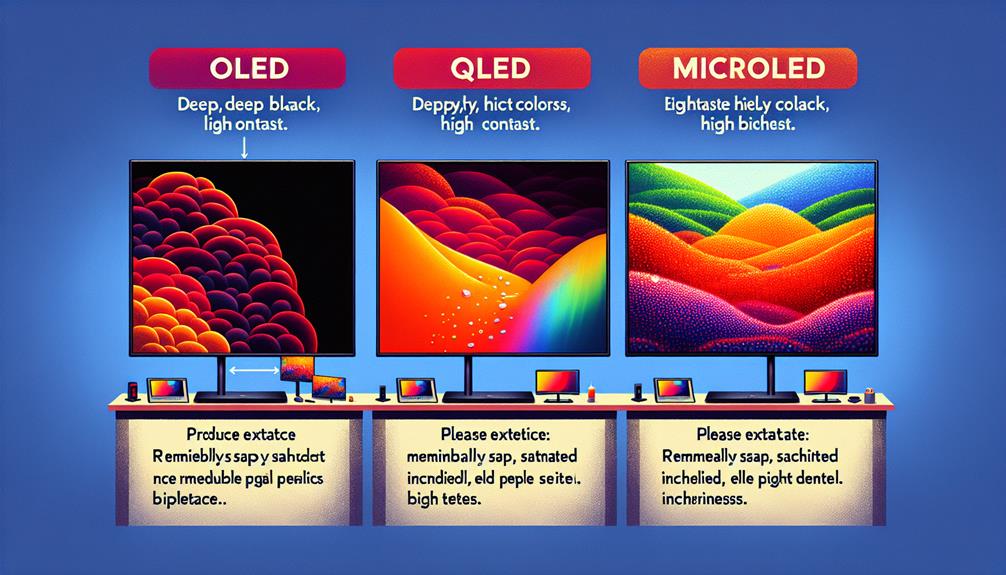
LED TVs are a cost-effective option with a trade-off in image quality. However, there are other panel types available that offer better image quality. Here are the key differences between them:
- OLED vs QLED: OLED TVs use organic compounds that emit light individually, resulting in perfect blacks and infinite contrast. QLED TVs, on the other hand, use a quantum dot layer to enhance brightness and color volume.
- LED vs Mini LED: LED TVs are the most common type and are cheaper but may have lower image quality. Mini-LED TVs, on the other hand, have many backlights that improve brightness and contrast, providing a better viewing experience.
When considering panel types, it’s important to weigh your priorities between cost and image quality. OLED and Mini-LED TVs generally offer better image quality, while LED and QLED TVs are more budget-friendly options.
HDR and Sound Quality
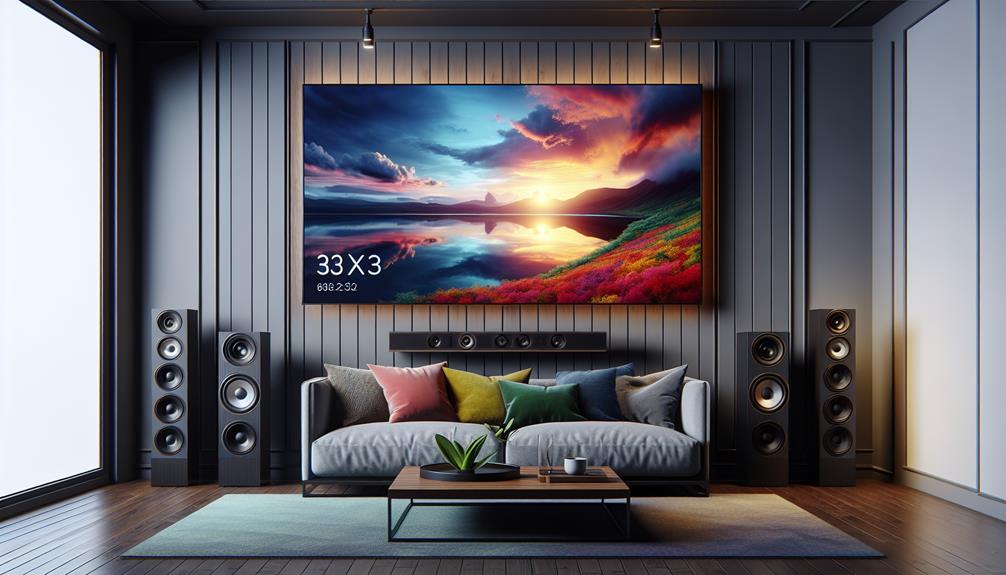
To enhance your viewing experience, it is important to consider the HDR capabilities and sound quality of your TV. HDR (High Dynamic Range) technology adds details to shadows and highlights, resulting in better image quality. The main HDR standards are HDR10, HDR10+, and Dolby Vision. Among them, Dolby Vision and HDR10 offer the best image quality. When it comes to sound quality, HDMI ARC (Audio Return Channel) and eARC (enhanced Audio Return Channel) ports allow you to connect your TV to soundbars or surround sound systems. HDMI ARC enables a direct connection with a single cable, while eARC provides even higher audio quality. By choosing a TV with Dolby Vision or HDR10 and the appropriate audio connectivity, you can enjoy stunning visuals and immersive sound for an exceptional entertainment experience.
Gaming and Connectivity
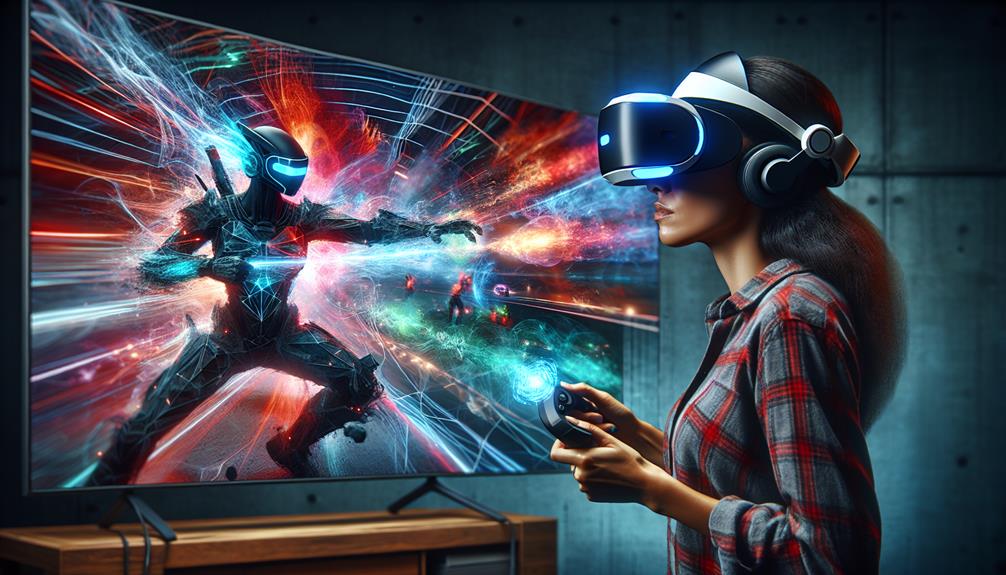
When it comes to optimizing your gaming experience and ensuring seamless connectivity, there are key factors to consider:
- Low input lag for gaming: Look for a TV with a low input lag, ideally under 30ms, to minimize delay between your controller input and the on-screen action.
- HDMI 2.1 ports for faster refresh rates: Ensure the TV has HDMI 2.1 ports, which support higher resolutions and faster refresh rates. This allows for smoother motion and a more responsive gaming experience.
- Smart TV functionality: Smart TVs connect to the internet, providing access to streaming services like Netflix and Hulu. They also offer voice command functionality and integration with smart speakers.
- Full-motion TV mounts: Consider using full-motion TV mounts for flexibility and adjustable viewing angles, allowing you to find the perfect position for your gaming setup.
Price Range and Budget Considerations
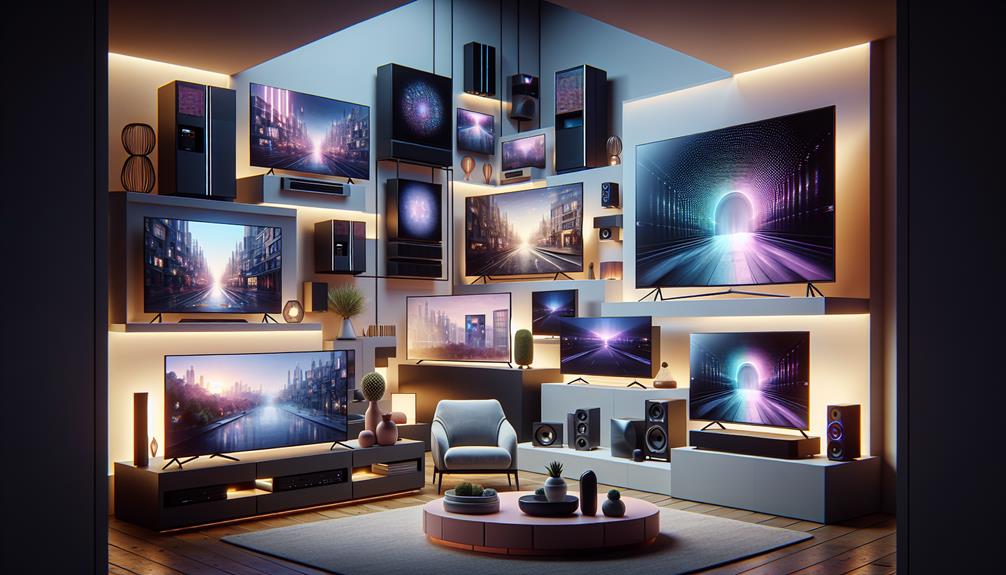
Considering your price range and budget is a crucial aspect when making a decision about purchasing a new TV. To help you understand the price range comparison and affordability factors, here is a table that outlines the different price ranges and the features you can expect within each range:
| Price Range | Features |
|---|---|
| Low | Smaller screen sizes (32-43 inches), HD or Full HD resolution, basic smart TV functionality, limited connectivity options, and entry-level image quality. |
| Mid | Medium screen sizes (43-55 inches), Full HD or 4K resolution, improved image quality and color accuracy, more advanced smart TV features, a wider range of connectivity options, and support for popular streaming platforms. |
| High | Larger screen sizes (55 inches and above), 4K or 8K resolution, superior image quality with HDR support, advanced smart TV capabilities, extensive connectivity options, and compatibility with popular streaming services and gaming consoles. |
Energy Efficiency and Environmental Impact
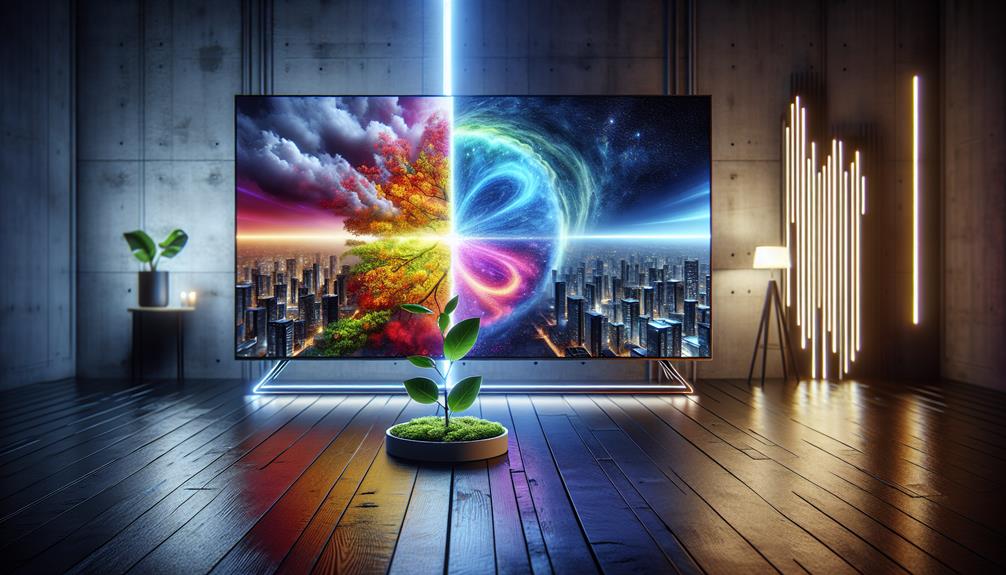
If you’re concerned about minimizing energy consumption and reducing your environmental impact, it’s important to consider the energy efficiency of the TV you choose. Here are some key points to keep in mind:
- Energy Efficiency: Look for TVs that are ENERGY STAR certified. These TVs meet strict energy efficiency guidelines and consume less power compared to non-certified models.
- Power Saving Features: Opt for TVs that have power-saving features such as automatic brightness adjustment and sleep mode. These features help reduce energy consumption when the TV is not in use.
- Eco-Friendly Manufacturing: Consider TVs that are manufactured using eco-friendly processes and materials. Look for brands that prioritize sustainability and use recycled materials in their products.
- Disposal and Recycling: When it’s time to upgrade your TV, ensure proper disposal and recycling. Many manufacturers offer recycling programs to responsibly handle electronic waste.
Additional Features and Considerations
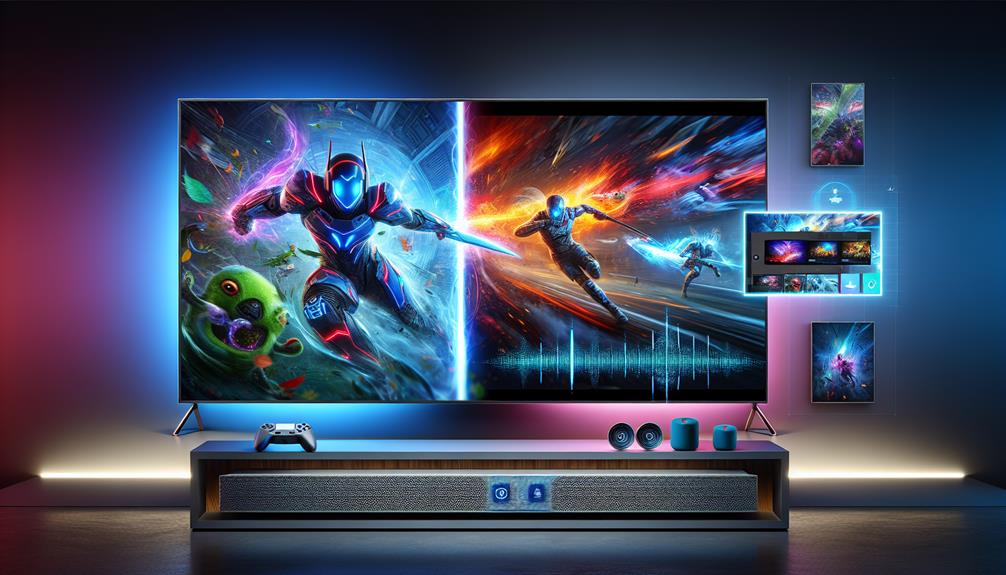
To make the best decision when buying a TV, it’s important to consider additional features and considerations that can enhance your viewing experience. One of these features is smart technology integration. Smart TVs connect to the internet, allowing you to stream content from services like Netflix and Hulu. They also offer voice command functionality and integration with smart speakers. Each smart TV comes with a built-in streaming platform like Roku, Fire TV, Android TV, or WebOS. Another consideration is mounting options and flexibility. Full-motion TV mounts offer the flexibility to adjust viewing angles, ensuring optimal positioning for everyone in the room. This feature allows you to find the perfect viewing angle, whether you’re sitting on the couch or reclining in a chair. Considering these additional features and considerations will help you choose a TV that meets your needs and enhances your viewing experience.
Frequently Asked Questions
Are There Any TV Resolution Options Beyond 8k?
Yes, there are TV resolution options beyond 8K. As technology continues to advance, future TV technologies are being developed. One such technology is 12K resolution, which has a staggering 100 million pixels, offering even more detail and clarity. However, it’s important to note that 12K TVs are not currently widely available or affordable. For most people, 8K resolution is already incredibly high-quality and provides a stunning viewing experience.
Is There a Recommended TV Size for Gaming?
For gaming, the recommended TV size depends on your personal preference and the size of your gaming space. Larger TVs can provide a more immersive experience, but it’s important to consider your viewing distance. Generally, a TV size between 55 to 65 inches is popular among gamers. Some of the best gaming TV models include OLED TVs, QLED TVs, and LED TVs with high refresh rates and low input lag. Consider these factors when choosing the best gaming TV for you.
What Is the Difference Between HDMI ARC and EARC Ports?
HDMI ARC and eARC ports are both used for audio connectivity, but they have some differences. HDMI ARC (Audio Return Channel) allows you to connect your TV to a soundbar or surround sound system using a single HDMI cable. It supports basic audio formats like Dolby Digital. On the other hand, eARC (Enhanced Audio Return Channel) offers improved audio quality and supports advanced audio formats like Dolby Atmos. It also has higher bandwidth, allowing for uncompressed audio transmission.
Can All Smart TVs Connect to Any Streaming Platform?
Yes, not all smart TVs can connect to any streaming platform. Smart TV compatibility with streaming platforms varies depending on the manufacturer and the built-in operating system. Each smart TV comes with a specific streaming platform like Roku, Fire TV, Android TV, or WebOS. These platforms have their own selection of supported streaming services. Before purchasing a smart TV, it is important to check if it is compatible with the streaming platforms and services you prefer.
What Are the Benefits of Using a Full-Motion TV Mount?
When choosing a full-motion TV mount, you’ll enjoy several benefits. Firstly, it offers flexibility and adjustable viewing angles, allowing you to tilt, swivel, and extend your TV for the perfect viewing position. This is ideal for reducing glare and optimizing your viewing experience. Additionally, full-motion mounts provide easy access to cables and ports, making it convenient for connecting devices. Lastly, they can save space and create a sleek, modern look in your living room. Consider your TV size and weight to choose the right full-motion TV mount for your needs.
Conclusion
Now that you have all the necessary information, you can confidently choose the perfect TV for your needs in 2023. Consider factors like resolution, size, panel type, HDR and sound quality, gaming features, connectivity options, price range, energy efficiency, and additional features. By weighing these factors, you can make an informed decision and find the ideal TV that will enhance your entertainment experience. Happy TV shopping!

